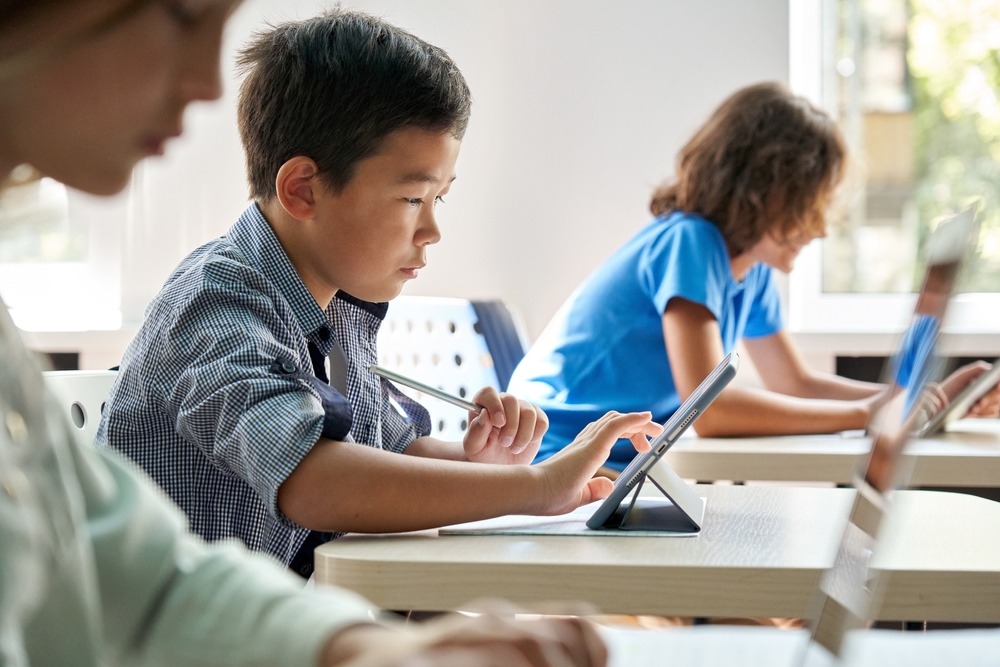In the ever-changing workplace of today, education has become essential, and people are looking for methods to improve their schooling from pre-school to university. Even while traditional universities are still a popular option for wealthy individuals, the introduction of technology into the classroom has created both new opportunities and difficulties. This essay examines the advantages and disadvantages of technology in the classroom, highlighting the necessity of using it wisely for the sake of both teachers and students.
Utilizing Technology to Improve Education Benefits:
1. Greater Accessibility to Information Technology has revolutionized education by increasing the availability of information. Online, digital resources like podcasts, e-books, films, and interactive materials are easily accessible. Less time is spent by students looking for material, which increases their interest and boosts their exam results.
2. Immersion-Based Education: Because they are used to multimedia, today’s pupils react favorably to immersive learning techniques.
An environment for learning that is more dynamic and complete is produced by computer simulations, augmented reality (AR), and virtual reality (VR).
Gamification of education encourages involvement and critical thinking, which gamifies the learning process.
3. Tailored Education: Teachers may now customize lesson plans to meet the requirements of each unique student thanks to technology. Through the analysis of performance data, personalized learning applications enable focused curriculum modifications. Pupils are free to go at their own speed, concentrating on areas that need more care.
4. Better Cooperation: Even in distant situations, students’ collaboration and communication are improved by technology. Collaborative software, Zoom, and other tools make it easier to share documents and collaborate on projects together. The COVID-19 pandemic’s impact on the move to online learning highlighted how crucial efficient technology utilization is for remote learning.
5. Essential Aspect of Education: Equal educational opportunities require technology-based learning principles in order to develop 21st-century abilities. Students’ involvement, interaction, and overall learning experiences are enhanced by interactive classrooms and contemporary technology. Technology in education is always changing, helping to modernize schools while keeping knowledge transfer as its major objective.

Overcoming Obstacles in Educational Technology Adverse Effect:
1. Social disengagement and isolation: Due to the potential for social isolation, online learning can reduce in-person interaction and socializing. While being physically absent might help one focus more, it also lessens the social components of learning. A well-rounded education requires finding a way to blend social engagement with concentrated learning.
2. Price and Availability: For some schools and kids, the expense of technology and the necessary infrastructure might be prohibitive. A digital gap may result from the inability of certain educational institutions to pay for the required technological resources. Providing all kids with equitable access to technology continues to be a difficulty in establishing an even playing field.
3. Issues with Training and Implementation: Teachers and students must have the appropriate training in order to use technology effectively. Inadequate training can cause overload, divert attention, and make it difficult to fully utilize technology. For online courses to be effective and to overcome any obstacles, qualified teachers are a need.
4. Distraction Potential: Technology may be a double-edged sword that can be used for both diversion and engagement. During class, students can feel tempted to use the internet for non-educational purposes.
It takes considerable thought to employ technology to improve learning without being distracting.
5. Education Inequality: Educational disparity results from the fact that different pupils do not have equal access to technological resources. To guarantee that all kids, regardless of socioeconomic background, may profit from technology breakthroughs, it is imperative to bridge the digital gap. In order to integrate technology in education fairly, it is imperative that these inequities be addressed.
Finding the Right Balance for the Best Educational Outcome
In conclusion, there is no denying that technology has a good influence on education and may provide creative solutions to improve the learning process. Technology has completely changed education throughout the world, from more easily accessible information to immersive learning methods. However, a balanced strategy is required to address issues including social isolation, financial differences, and other diversions.

The secret is to design, implement, and continuously assess technology’s role in education. In order to effectively use technology to satisfy the wide range of demands of children, teachers are essential. Even while technology is an effective tool, it should be seen as a means to an end, with information transfer and preparing students for success in the real world being the ultimate goals.
It is critical to continue being flexible and sensitive to the ways in which students’ demands are changing as technology in education continues to advance. By doing this, teachers may make the most of technology’s advantages and provide a welcoming and inclusive learning environment that equips students for the challenges of the twenty-first century.
